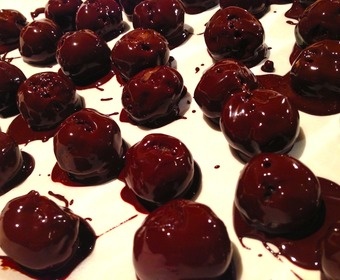
All about sweetness
Sweetness signals edible and nutritious carbohydrates. The chains of molecules that make up sugars are relatively short and easily digested, distributed and metabolized by the body. Hence the expression “fast carbs”.
A taste enhancer
Sugar, like salt, has an ability to boost flavors. Many sauces and casseroles are experienced as more flavorful with a little added sugar. A dose of sugar goes well with, among others, tomatoes, chicken and pork.
Sour makes sweet tastier
Without acidity, sweetness is often perceived as sticky and tacky, even as "un-fresh". An ordinary lump of sugar immediately becomes a lot tastier with a few drops of lemon. It is the combination of acid and sugar that makes oranges, soft drinks and white wines taste so good.
Sugar is also a feeling
Adding large amounts of sugar to food is not only about taste, sugar also gives rise to a syrupy, smooth and appetizing sensation in the mouth
Too much sugar today
Earlier, when we were evolving from apes into humans, large amounts of sugar were only to be found in natural honey giarded by bees. Today, enormous amounts of sugar are produced and consumed, mainly from sugar beet and sugar cane. Refined and pure sugar – which affects sweetness without affecting taste – has revolutionized the art of cooking. Unfortunately, excessive amounts of sugar are not good for us.
Refined sweetness
Refined sugar, brown sugar, muscovado sugar, syrup, maple syrup, palm sugar and other sources of sugar are all different types of sweeteners and give rise to different taste sensations.
Natural sweetness
Sweetness can be found naturally in vegetables such as beetroot, onion, carrots, cabbage etc. And, of course, in fruits. The tasty aromas/flavors on the surface of fried onion and fried and grilled meat are the result of reactions that include sugar.
Starch turns sweet
Some forms of starch – ”fast carbs” (or ”white carbs” as in potatoes, pasta and processed rice) – start breaking down as soon as they come into contact with saliva and therefore also taste sweet. For example, chewing on a piece of white, unsweetened bread will soon give rise to a taste of sweetness.
Melting point 160 degrees
Sugar caramelizes when the temperature exceeds the melting point at 160°C.
Fat can be sweet
The mouth also perceives most fats and oils as mildly sweet. Fat is an even more potent source of energy than sugar, but a slower one.
Sweet food and wine
Read about wine and the basic tastes.


